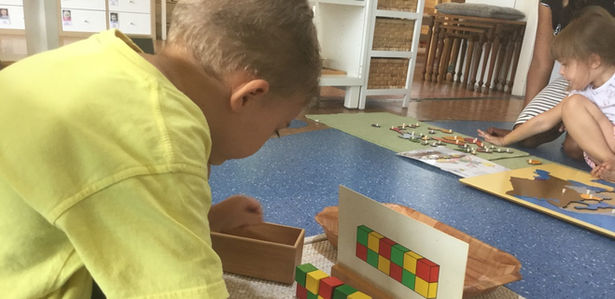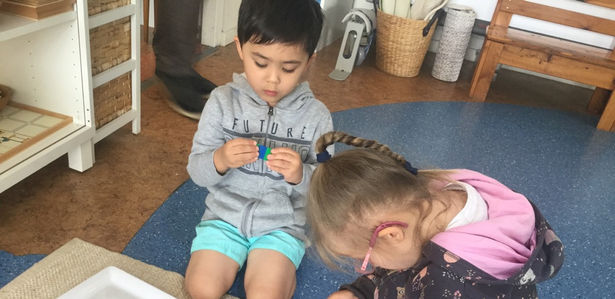
“Let your child's true colours shine”
CALL US: 0437 900 305
Sensorial
What is it?
The young child is a 'sensorial explorer'. It is through their five senses that they learn about the world around them. At birth, the senses are unrefined. Through experiences, they become more sophisticated and discriminating. They allow the child to make classifications in his environment. The sensorial materials are designed to give the child 'keys' to help him classify the things around him. This is the first step to organising intelligence.
Sensorial activities teach about:
-
Shape
-
Colour
-
Grading
-
Sorting and patterning
-
Refining senses - touch, smell, taste, hearing
Concepts Taught in the Sensorial Area
The Montessori activities help children to refine a wide range of senses.
These include visual; touch (tactile, baric, thermic, stereognostic); auditory; olfactory; and gustatory.
Fun games are used to teach children vocabulary and provide additional challenges.
The world is full of colour. Children start learning about colours by matching them, learning their names and identifying these colours in their environment. As their colour sense becomes more astute, they can investigate shades and tints. In the art area, they may experiment with mixing their own colours.
Shapes are all around us. We all use shapes to help us identify and organise visual information. The ability to recognise and differentiate between shapes is a requisite ability for many cognitive skills such as categorisation, reading (letter recognition) and math (numeral recognition, recognising shapes to count).
After children learn to differentiate between shapes, they enjoy sorting and grading activities. Children can sort and grade based on size (biggest to smallest, thickest to thinnest, longest to shortest etc), shape, colour, texture and many other properties. These help to develop important cognitive skills.
Patterns are everywhere - in nature, art, music, literature and most obviously, in mathematics. The ability to recognise, extend and create patterns allows us to see relationships and make predictions. Patterning activities can be very fun and rewarding. They start simple and progress to more complex.










































